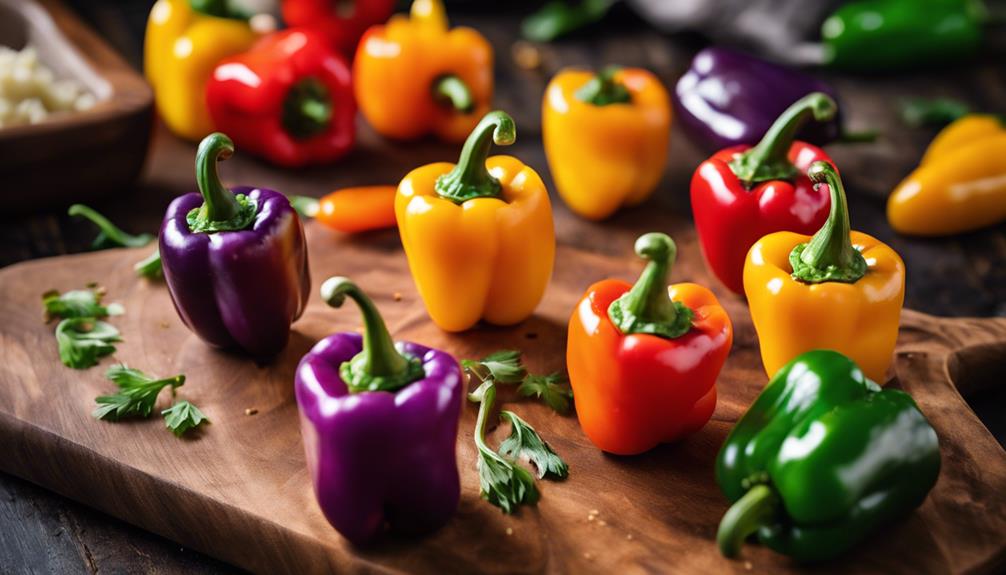If your baby experiences skin rashes, tummy troubles, or breathing issues after consuming cinnamon, be cautious! Watch out for potential symptoms of a cinnamon allergy including rashes, itching, vomiting, wheezing, or even anaphylaxis. Keep an eye on skin reactions, upset stomach, or serious signs like facial swelling or rapid heartbeat. Be vigilant for breathing difficulties or a drop in blood pressure. Remember, quick action is crucial for your little one’s safety. Seek medical assistance immediately and avoid cinnamon. More information is available to help you safeguard your bundle of joy from these dangerous reactions.
Key Takeaways
- Watch for skin rashes, hives, or itching.
- Be alert to respiratory issues like coughing or wheezing.
- Monitor for stomach problems such as vomiting or diarrhea.
- Look out for signs of anaphylaxis like difficulty breathing.
- Seek immediate medical help for any concerning symptoms.
Common Cinnamon Allergy Symptoms
Identifying common cinnamon allergy symptoms in babies is essential for prompt diagnosis and management. Skin rashes, hives, itching, or redness may appear on your baby's skin after cinnamon exposure, signaling a potential allergy.
Keep an eye out for gastrointestinal symptoms like vomiting, diarrhea, or stomach pain, as these could indicate a sensitivity to cinnamon in your little one's diet. Additionally, respiratory symptoms such as wheezing, coughing, or difficulty breathing shouldn't be overlooked, as they may be early signs of a cinnamon allergy in babies.
In rare cases, severe allergic reactions can occur, leading to anaphylaxis. Symptoms like swelling of the face or throat require immediate medical attention. Remember to monitor your baby closely for any unusual symptoms or reactions following cinnamon exposure.
Monitoring Cinnamon Allergies
Monitoring cinnamon allergies in babies requires close observation for any potential symptoms or reactions that may indicate an allergic response to cinnamon. Keep an eye out for skin rashes, itching, or hives, as these are common signs of a cinnamon allergy in little ones.
If your baby starts showing symptoms like throat swelling, difficulty breathing, or wheezing after consuming cinnamon, it could be a severe allergic reaction that needs immediate attention.
Remember, upset stomach, vomiting, or diarrhea might also point towards an intolerance or allergy to cinnamon.
In severe cases, if your baby experiences anaphylaxis with symptoms like facial swelling, rapid heartbeat, or dizziness, don't hesitate to seek medical help right away.
Always consult a healthcare provider for a proper diagnosis and guidance on managing cinnamon allergies in babies to safeguard their safety and well-being.
Keep a vigilant watch, and if anything seems off, trust your instincts and get the necessary medical attention promptly.
Managing Allergic Reactions

When dealing with allergic reactions to cinnamon in babies, immediate action is essential for their safety and well-being.
Cinnamon allergy symptoms can range from skin rashes, itching, swelling, and redness to gastrointestinal issues like vomiting, diarrhea, and stomach pain.
In severe cases, babies may experience anaphylaxis, a serious allergic reaction that demands prompt medical attention.
Look out for signs such as breathing difficulties, throat tightness, or a sudden drop in blood pressure, as these could indicate a severe allergic response.
If your baby shows any of these symptoms after exposure to cinnamon, it's important to seek medical help right away and avoid further contact with the allergen.
Cinnamon Allergy Risks

Cinnamon allergy risks for babies include symptoms such as skin rashes, itching, swelling, and hives. These signs may not always be immediate, so it is vital to be aware of other potential symptoms like respiratory issues (coughing, wheezing, or difficulty breathing) and gastrointestinal problems (vomiting, diarrhea, or stomach pain). While rare, anaphylaxis, a severe allergic reaction, is a serious risk with cinnamon allergies in babies. It is important to recognize these symptoms promptly to prevent escalation. To help you understand the risks better, here's a breakdown of possible symptoms associated with cinnamon allergies in babies:
| Type of Symptom | Examples |
|---|---|
| Skin Rash | Itching, Redness |
| Respiratory | Coughing, Wheezing |
| Gastrointestinal | Vomiting, Diarrhea |
| Anaphylaxis | Difficulty breathing, Swelling |
| Allergic Reaction | Hives, Stomach Pain |
Seeking Medical Advice

If you suspect your baby is showing signs of a cinnamon allergy, it's important to seek medical advice promptly. Allergic reactions to cinnamon can manifest in various ways, from skin irritations to gastrointestinal issues and even respiratory system complications.
It's vital to be vigilant and observe any concerning symptoms that your baby may be experiencing after exposure to cinnamon. Seeking professional guidance from healthcare providers can aid in identifying and managing potential allergies or adverse reactions effectively.
Remember, your baby's health is a top priority, so don't hesitate to reach out for medical assistance if you have any doubts or see any alarming signs. Consulting with experts can provide you with the necessary support and guidance to ensure your baby's well-being and address any issues related to a possible cinnamon allergy promptly.
Trust your instincts and take action to protect your little one's health.
Frequently Asked Questions
What to Do if Baby Is Allergic to Cinnamon?
If your baby is allergic to cinnamon, promptly seek medical advice. Watch for symptoms like skin rashes, stomach issues, breathing problems, or facial swelling. Always consult healthcare providers for proper diagnosis and guidance on managing allergies.
Can Babies Be Around Cinnamon?
Babies can be around cinnamon, but always watch for any allergic reactions. Remember, a sprinkle of caution goes a long way in keeping your little one safe. Stay vigilant and trust your parental instincts.
How Do You Get Over a Cinnamon Allergy?
To overcome a cinnamon allergy, you must avoid all cinnamon-containing products. Consult a healthcare professional for testing and guidance. Develop an allergy action plan, carry emergency medication, and educate those around you. Your diligence is key to managing this allergy effectively.
How to Test for Cinnamon Allergy?
To test for a cinnamon allergy, you can try the allegorical method of planting seeds in different soils. Place a small amount of cinnamon on your baby's skin and observe for reactions. If symptoms appear, consult a healthcare provider promptly.
Conclusion
To sum up, it's crucial for parents to be aware of the common symptoms of cinnamon allergies in babies and to take necessary precautions.
Did you know that approximately 4% of children have food allergies, with cinnamon being one of the common culprits?
By staying informed and proactive, parents can help guarantee the health and safety of their little ones.
Remember, always consult a medical professional if you suspect your baby may have a cinnamon allergy.
Stay cinnamon-sitive!










